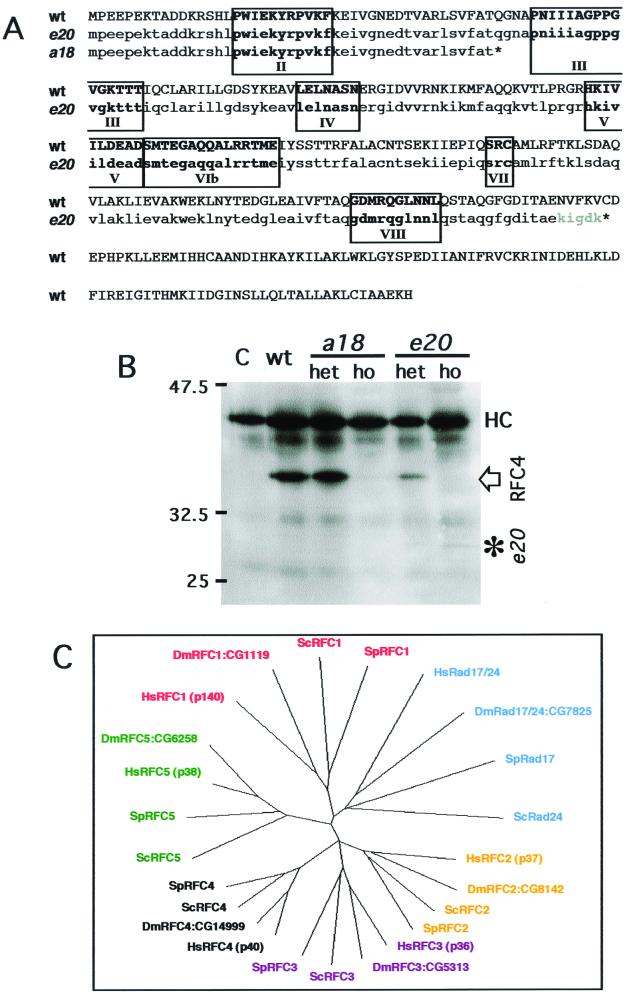FIG. 2.
Identification of the mutations in l(3)Rfc4e20 and l(3)Rfc4a18 and phylogenetic relationships between RFC family members from D. melanogaster, Homo sapiens, S. pombe, and S. cerevisiae. (A) DNA from l(3)Rfc4e20 and l(3)Rfc4a18 homozygous larvae was amplified by PCR, cloned, and sequenced to determine the molecular lesions in l(3)Rfc4e20 and l(3)Rfc4a18. The lesion in l(3)a18 is a single base change (C136T), which resulted in a premature stop codon yielding a putative product of 45 amino acids. The lesion in l(3)e20 is a 351 bp in-frame deletion. The predicted protein products are shown beneath the wild-type (wt) gene open reading frame (ORF). The conserved RFC boxes are in boldface and numbered. (B) Immunoprecipitation of the DmRFC4 protein from wild-type, heterozygous, and homozygous larval extracts. RFC4 was present in wild-type and heterozygous larvae carrying both alleles at the expected size of 40 kDa. In extracts from both homozygotes, the wild-type protein was detected at very low levels, which may represent residual maternal product. In extracts from homozygous l(3)a18 larvae, the mutant protein could not be detected. In l(3)e20 larval extracts, a protein band at the predicted molecular mass for the mutant form of DmRFC4e20 (29 kDa) was observed, thus confirming the sequencing data. C, antibody-only control for immunoprecipitation (no larval extract); HC, immunoglobulin heavy chain of the anti-DmRFC4 antibody used for immunoprecipitation and detected by the secondary reagent during the immunoblotting of the immunoprecipitates. (C) Phylogenetic relationship between the five RFC subunits (and the related RFC1 products, SpRad17 and ScRad24) (obtained from ClustalX analysis and drawn with TreeViewPPC). The molecular weights of the human proteins (as this is the conventional nomenclature) and the Celera Gene nomenclature (CG number) for the Drosophila genes are given. For all proteins used in the phylogenetic analysis, the Drosophila ORF is more closely related to the human gene than to the yeast sequences.

